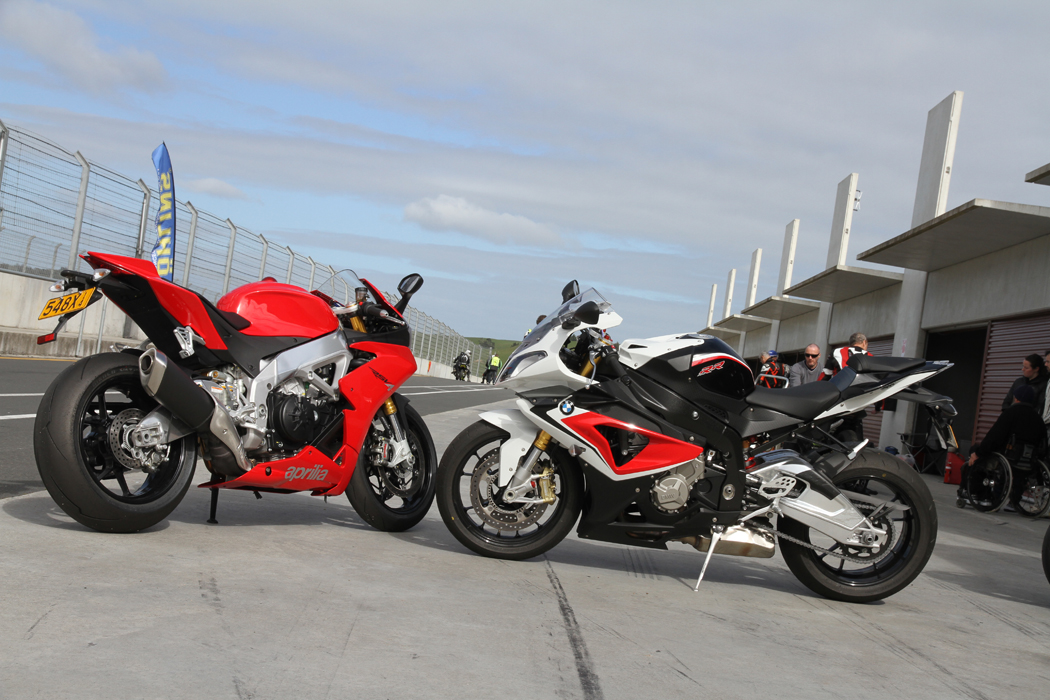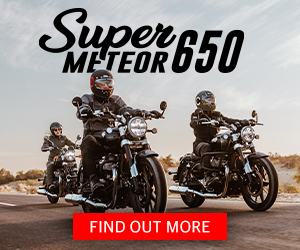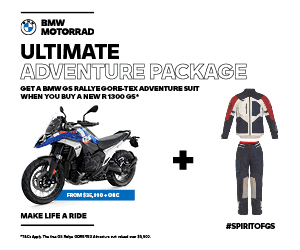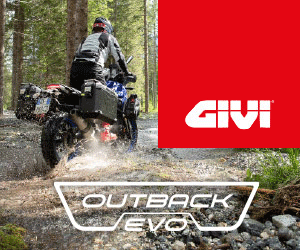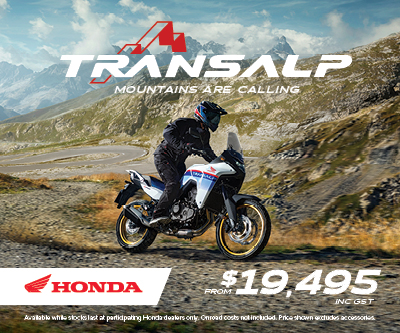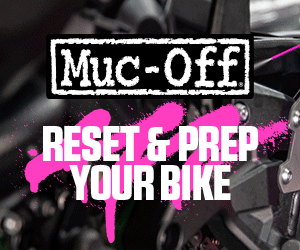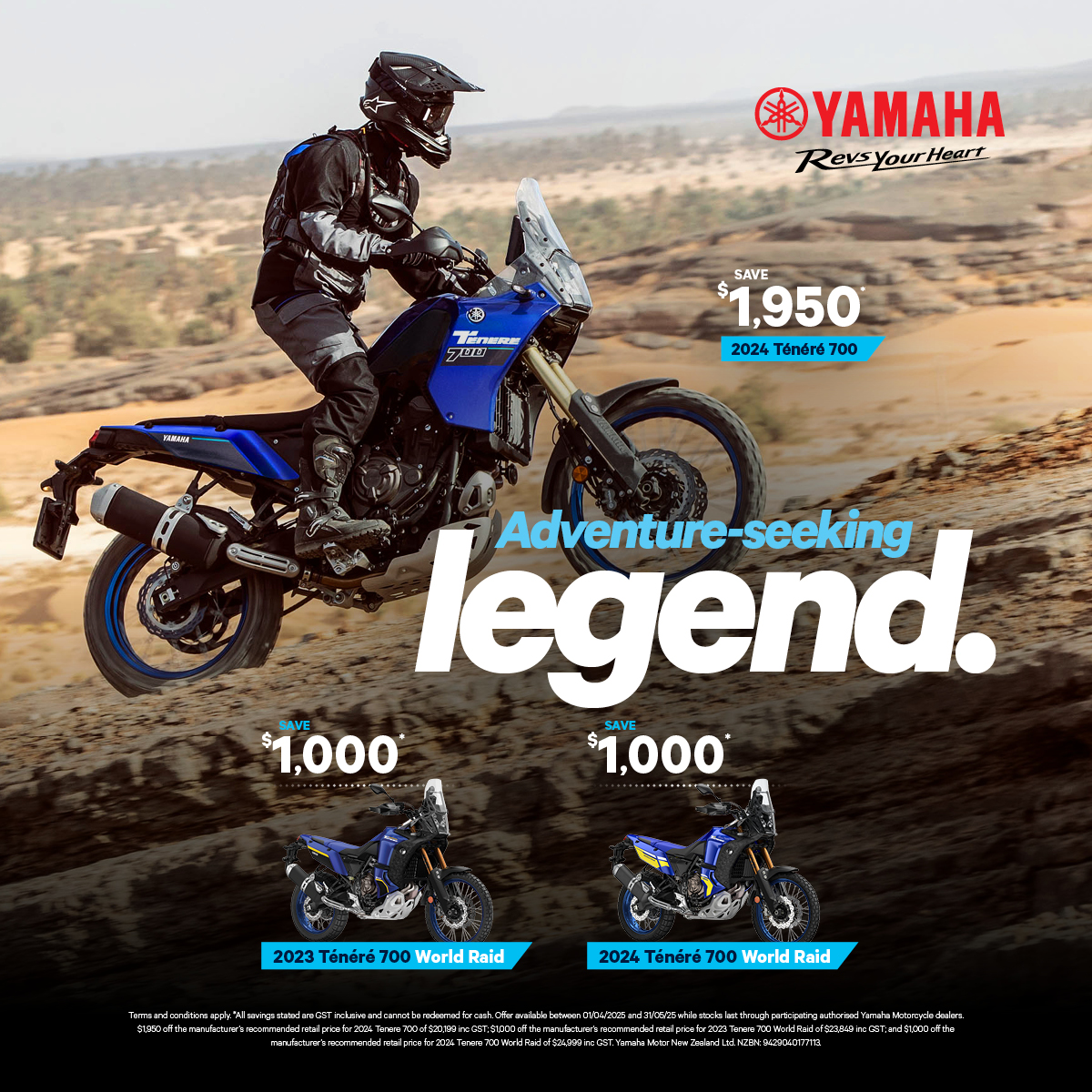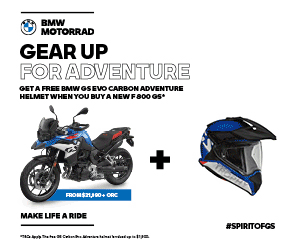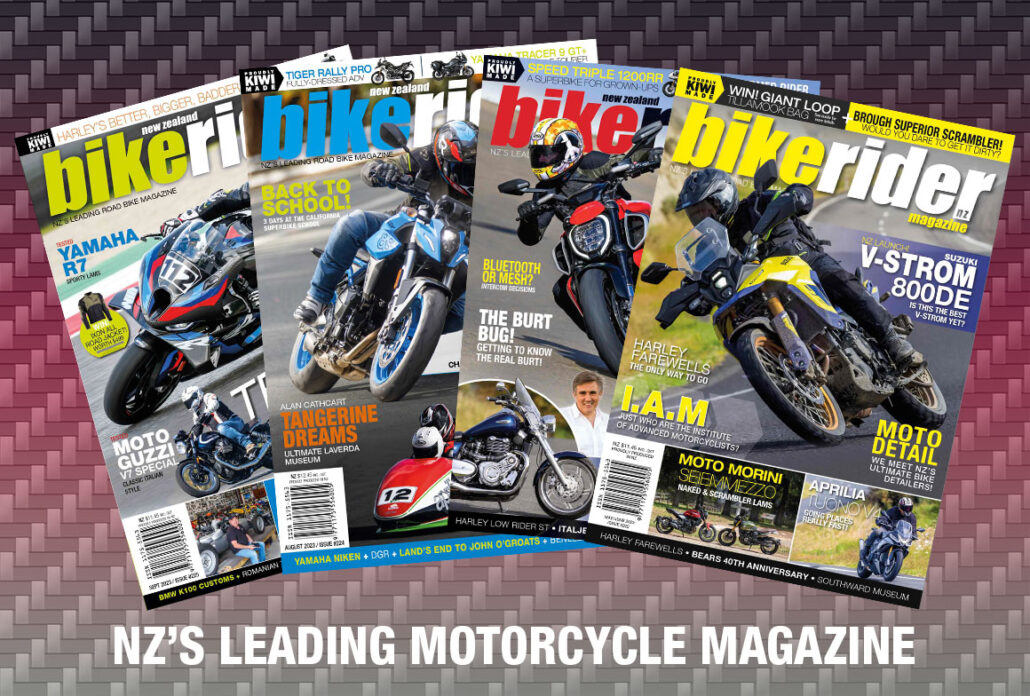Ultimate Superbike
When it comes to Superbikes, there are two that stand head and shoulders above the rest when it comes to power, gadgets and looks; BMW’s S1000RR and Aprilia’s RSV4-R APRC. We were lucky enough to get hold of both models at the same time, so we just had to spend a day ripping around Hampton Downs followed by a day on the scenic Coromandel Peninsular just to see which had the edge…
There are many out there who constantly complain about the advent of electronic aids on motorcycles. But chasing Mark along one of our favourite twisty roads aboard the Beemer, I can safely say that I wouldn’t be quite so gung-ho if I didn’t know I had the safety net of ABS brakes, traction control, wheelie control, and all the other gadgets that help you tame a bucking superbike and keep it on the black stuff. I’d found the limits of the traction control system on the Beemer during the official launch and unveiling, having a high-side on turn 11 that could have ended so badly, that it probably would have ended my riding career. But thankfully I landed back on the saddle after doing a bit of a superman impression above the BMW for what seemed like an eternity. So I know that electronics can’t save everything. But for on the road, with dodgy surface conditions and the constant variables of other road users to deal with, if it’s a choice of electronics or no electronics, I’d take the bike with the extra brain any day…
Looking at the two machines we have on test, and they’re similar in that they’re designed to achieve results in the World Superbike series, but also very different in the way they’ve gone about trying to achieve this. They’re both 1000cc superbikes, but while BMW went down the traditional in-line four cylinder, DOHC, water-cooled route, the Aprilia is a V-four configuration, which not only supplies the Italian machine with a healthier bottom-end punch, but also supplies a glorious sound to match. Styling is also an area of difference, with the Aprilia typically Italian styled with sharp lines and sexy curves, while the German’s couldn’t help letting their penchant for efficiency override any styling decisions, with the asymmetric design undoubtedly great for getting everything to work properly, but hardly likely to win a ‘best looking bike’ competition.
It’s the same when you jump on board, with BMW somehow managing to make a razor-sharp sportsbike feel more like a sport tourer, such is the degree of sophistication you are confronted with and the well thought out riding position cosseting rather than torturing. And again the Aprilia is the polar opposite. Okay, it’s just as sophisticated but the interface is nowhere near as user-friendly. And the riding position! Well, it’s grouse for the racetrack, but thinking about taking the Aprilia on a lap of the country makes my back, neck and wrists hurt before I’ve even go on the bike. But touring isn’t what these bikes are designed to do, so rather than ride from Auckland to Wellington, we made our first pit stop Hampton Downs to have a bit of fun at a Play Days track day.
Race Ready
Both these bikes are represented at World Superbike level, and are both doing extremely well, although Tom Sykes’ Kawasaki is leading the points and really, those bikes are a fair bit different to what you or I could buy from a store – or are they? Both of these European rockets are at the pointy end when it comes to performance, sophistication and results. Jumping from one bike to the other at Hampton Downs, you notice the Aprilia’s engine is slim through the middle, yet the BMW’s powerplant isn’t noticeably wider once you settle into the firm seats that adorn both machines. The Aprilia is markedly taller to the seat, and the riding position throws you forward to stay on top of the handlebars, a very aggressive stance. The BMW, on the other hand, is probably the least extreme of the competitive superbike field. It even has room for a small but meaningful pillion seat, one-upping the Aprilia, which bizarrely has pillion pegs but nowhere for them to actually deposit themselves… Luigi must have forgotten his wife likes to travel on the back, or maybe she prefers to stand…
The Aprilia really does feel tiny compared to the BMW, which is deceptive as they are almost identical in the figures for wheelbase, weight etc. The BMW pumps out a few more horsepower, although the V-four produces better torque, so although the S 1000 RR is arguably marginally faster, the difference is tiny and the Aprilia turns slightly quicker in stock trim, robbing Peter to pay Paul type stuff. Where the BMW does outshine its Italian companion is under brakes. The German machine’s Race ABS biting the discs so hard that your eyes bulge the first few times you grab the whoa lever. Gentle use would work but it was more entertaining to just cope with the force trying to buckle your body into the fairing and the brilliant ABS avoiding the tyres from letting go and biffing us all over Hampton Downs. Single-finger braking was the call on the Beemer.
The APRC ABS equipped Aprilia also has a very comprehensive smart package, including the first ABS system that Aprilia has ever deemed worthy of their flagship bike. Both bikes use Brembo monobloc calipers but the BMW has fierce uptake, losing nothing to work in with the improved ABS. The Aprilia’s brakes are excellent – the BMW’s are simply eye-poppingly stunning, period.
We didn’t have a private testing ground available to see which is quickest at devouring airfields but the BMW has starred in so many of these scenarios that you wouldn’t bet against it pipping the Aprilia. For everyone who doesn’t actually race down deserted runways, it doesn’t really matter much. Roll-on tests show the dyno charts have it pretty sorted. The Aprilia punches out from mid-range a little harder, the BMW has a slight edge up top. The Aprilia was fitted with sportier tyres, so did enjoy an edge in the corners, just. As for the traction control, the Aprilia’s is much easier to adjust on the go, care of the two paddles on the left handlebar but the BMW’s system is almost seamless, using lean angle etc (and analysing tyre shape) to work out traction and also apply the same data to the clever ABS. The Aprilia didn’t feel quite as keen to catch you if you did something ham-fisted but there is a caveat on traction control set to track or race function. It is NOT there purely as a safety net like it is in the road modes. It is there to maximise drive, as in speed around a track. Sure, it’ll step in sometimes but it will not stop you crashing if you try to defy the laws of physics. You also have to adjust your style to use the traction control, not modulate it with the throttle, as that negates the system and can end badly. TC or not TC, that is the question you need to ask yourself.
Unfortunately, the gearing on the Aprilia is massively tall, obviously designed to take in the long straights of European circuits or the limitless Autobahns, but on the tight, twisty Hampton Downs, this meant first gear was required on the slower turns, as despite the Aprilia having the healthier bottom-end, it would still bog and lose a few bike lengths to the Beemer. Now, I’m not sure about you, but snapping the throttle open in first gear while cranked over is a scary prospect no matter how sophisticated the electronics are, and the RSV’s traction control still stepped in despite my more reserved throttle openings mid-corner. The BMW on the other hand was perfectly composed, with the four-cylinder powerplant still supplying useful drive from mid-revs.
Both bikes are fitted with quick-shifters, allowing you to grab another cog without having to close the throttle or use the clutch, something that is remarkably useful on the racetrack where every tenth counts. But it’s also great on the road especially when you’ve got a pillion on the back, with the smooth gear changes meaning you don’t get the customary smack on the back of the helmet on each change, although it was only an imaginary friend on the Aprilia anyway.
After putting in a few sessions on the two machines and fielding questions from many other riders in the paddock who were keen to know our opinions on how the two bikes compared, we loaded up and headed back home, ready for another day of testing but this time on the road…
Manners Maketh The Man…
We all ride motorbikes for various different reasons, but one of the most prevalent factors has to be excitement. The wind, the noise, leaning, accelerating, braking… they all add up to make each ride a journey, not just a trip. Personally, I also need to find a bike attractive, although that doesn’t necessarily mean in a Ducati Panigale kind of way. The latest BMW R 1200 GS is almost utilitarian in its design, yet somehow is still an attractive motorcycle. The Honda Valkyrie is huge, with the flat six motor poking out both sides, but is still strangely good looking.
Casting an eye over the Aprilia and the BMW and there’s no denying the Italian machine wins in the beauty contest, becoming an even wider margin when you start the two machines up and the V-four sounds glorious next to the in-line four of the Beemer. But tastes also change, and even though many baulked over the asymmetric design, it’s now much more acceptable, with the white, red, black colour scheme of the latest model making the Beemer stand out from the crowd.
Different aspects and requirements come to the forefront when riding on the road, with a decent set of mirrors more valuable than something which will shave a fraction of a second off the journey home. Significantly higher in the area of practicality is the BMW, which could quite easily handle a daily commute or a weekend getaway. The fuel-injection delivery is seemless, and the easily selectable engine maps allow you to change how the powerplant behaves and how much electronic interference you get. Changing the mode automatically changes the other parameters, although you can even set your own mix of power and rider aid rather than sticking to BMW’s recommendations.
The clocks are logical and well laid out and the system for adjusting everything is intuitive in a typically German fashion. The Aprilia is typically Italian, and just like you’d imagine when picturing an Italian performance machine. The riding position is extremely focused, with the low bars and high saddle making more than an hour in the saddle a pain in the wrists. Adjusting the traction control is easy, but trying to work your way through the rest of the other functions on the Aprilia takes a degree in Italian electronics, something that very few seem to hold… the RSV is a superbike in every sense of the word; focussed, sharp and extreme. The power delivery is abrupt enough that you wouldn’t really want to ride it to work and back everyday, and a decent inside leg measurement is also required to be able to touch the ground.
With both bikes pushing out over 180hp and capable of speeds in excess of 300km/h, the first part of our test needed to take place on a racetrack, if only to avoid losing the test bikes to a police compound for 28 days! Thankfully, the guys at Playdays came to the rescue and squeezed us into one of their joint car/bike days at Hampton Downs. With a couple of car sessions between the bikes, it gave Kev and I enough time to compare notes and swap between bikes. If you fancy giving the track a go (and we thoroughly recommend it to improve skills), visit www.playdays.co.nz for dates and bookings.
Kev’s Angle
BMW S1000 RR and Aprilia RSV4 APRC ABS Second Opinion
Almost a case of sophisticated efficiency against sophistication taming raw passion, they share the same class and are both stunning machines. The experience is as different as the engine configurations on road or track.
Starting with the Aprilia, it’s hard to say why there are pillion footpegs, as unless you have a pillion with a camera mount for an arse, there is nowhere for them to sit, so they’d get binned immediately. That kind of restricts who will buy one, as it could lead to marital disharmony… For the rider, it’s a very involved ride, placing you further forward than the Beemer, so it’s an aggressive riding position that suits the sound, feel and power delivery of the RSV4.
It does have the full electronics package, so is a good match for the German bike, although can’t quite match the S 1000 RR’s slick shifting. The rapid change traction control is a gem, unless you happen to nudge the paddles when clamouring around and adjusting things unknowingly. The Beemer has the gadgetry edge though, taking lean angle and tyre profile into the equation as well. Braking is excellent and the ABS really is sportsbike level. Not quite the Earth rotation-slowing initial bite of the BMW but easier to regulate, although with the new ABS systems, you really do need to learn to let it find the limits rather than trying to do that and anticipate what you’re doing as well – one or the other is way better than both.
Awesome, awesome sounding motorcycle – just fantastic when given the total jandal.
The BMW S 1000 RR is such a complete package that you almost end up trying to find a fault, just to stop the sheet looking spotless. It’s still at the top of the dyno charts, although not by much any more. As everyone adds more and more wizardry to catch the Bavarian bike, refinements just keep making it better, smoother and more capable of finding traction at the edge of the tyre. It has a pillion seat, so wins that discussion by default if that’s a deal-maker. It puts out a few more ponies but slightly less torque than the RSV4, although both have plenty to satisfy any sane person, and even most that have no such claim. It doesn’t quite have the raw appeal of the sexy Italian but is the smart choice.
Planted and stable in the extreme, and now wearing the latest Sport ABS, it’s a bike that gives confidence to the average rider and is simply spectacular in the hands of an expert. The best of the best?
In summary, if you gave me thirty grand and sent me into a store or two, I’d tell you that I’m going to grab the BMW S 1000 RR, as it just has the edge as a complete package but am likely to come out of the store on the Aprilia and $3785.05 in change (after deducting for a packet of mild painkillers for long trips). Logic versus emotion – your call.

